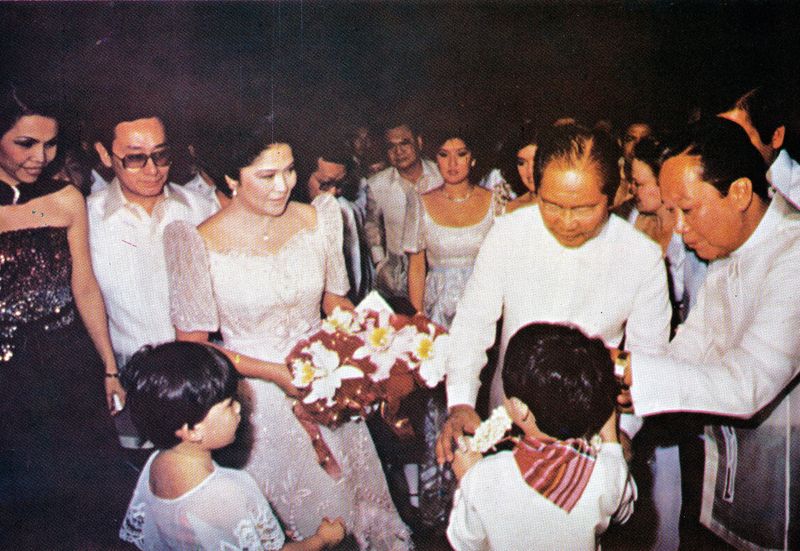
The lead up to the completion of the awaited Manila Film Center was both exciting and scandalous in equal measure. As the first of the time in Asia, many believed it would change the face of Asian culture forever.
While the project was applauded by the general population, the bulk of its planning lay in the hands of the first lady, who endured months of pressure, critique, and scrutiny in the months leading up to the Centre’s construction.
Due to this pressure, the project was aggressively pushed by the First Lady of the Philippines, Imelda Marcos. Imelda had been working on the first Manila International Film Festival, she had promised a spectacle unmatched by any other festival in the industry. She invited hundreds of high profile international guests, so there was now a demand to meet their expectations.


In fact, many believed the International Film Festival was an expensive idea, and couldn’t be afforded by struggling population of the time. Some suggest, in the face of the horror that later occurred, that the project was cursed from the start.
At the crux of the Manila Film Festival was the palatial Manila Film Center’s construction. The building was initiated and managed by government in just 170 days. While the Marcos’, who ruled the Philippines at the time, prided themselves on the amount of manpower and funds that would be released to unearth this historical building, skeptics arose all over the Philippines. Nothing about the super swift completion of an 8-story building screamed safe; in fact, the practical carnage that followed as the roof collapsed during construction was possibly to be expected.
But what would this be suggesting about the festival? Is the magnificent film center truly built on the bones of builders forgone? Does the true number of deaths vastly surpass the official figures? Can supernatural occurrences be expected to occur as the rich and glamorous celebrate cinematography in the tomb of lost workers?
This article will attempt to answer some of the questions mentioned above. It is, however, important to note that in the matters of catastrophes and sudden tragic deaths, the truth can often be much more complex than imagined. For this reason, all readers must pay keen attention to the use of the word “alleged”, as relevant rumours are mentioned.
The Manila Film Center: A grand project turned tragedy.
The Manila Film Center, a national building designed by acclaimed architect Froilan Hong, was built to accommodate the expected huge turnout for the first Manila Film Festival. The building had its edifice upheld on over 900 piles, reaching deep into the earth, to the bedrock 120 feet below the surface.
When first lady Imelda Marcos called for the construction of the $25 million building August of 1981, the Philippines did not officially have a film archive. With the help of Betty Benitez, Deputy MHS Minister Jose Conrado Benitez’s wife, Imelda Marcos founded a group to oversee the project and raise the necessary funds. The project was conceptualized by Ramon M. Ignacio, a Senior Technology Officer at the Technology Resource Center.
On November 17th, 1981, during construction, the scaffolding collapsed and over 150 workers fell and were buried alive in quick-drying wet cement. To this day, the official figures (7 dead) are disputed by the general population. The workers present on site claim to have removed over a hundred bodies from the rubble.
Controversy
The most mystifying part of the tragedy remains the administration of the time’s desire to prepare an official statement prior to the rescuers being allowed on site. According to official reports, rescuers were allowed inside the accident site 9 hours after the roof collapse.
Many believe the tragedy was a direct result of the administration’s insistence the project be finished in an unrealistic period of time. Experts in the field (architects and engineers) claim it is against “most industrial building state legislation” to demand the completion of a construction of this scale in such a time frame.
The project, which originally relied on a $5 million subsidy intended for the film festival, saw its funding severed in the aftermath of the tragic deaths. Local and international newspapers widely reported the irresponsibility of the government of the time, blaming the scale of the catastrophe on their ineptitude dealing with the accident appropriately.
Stuck midway through a project none wished to be involved in further, Imelda Marcos was forced to create a contingency plan to generate the funds necessary for the festival. Due to her influence in the presidential palace, she was able to negotiate the passing of a Presidential Decree (P.D. 1986), which required the immediate creation of a board of review for “motion pictures and television”. The MTRCB or “Movie and Television Review and Classification Board” alleviated censorship laws around the festival, allowing Soft Porn movies to be on show throughout the festival. This earned the Manila Film Center project the additional funding it required for its completion, which ultimately occurred in 1982.
Rumors & Myths
A couple years after the notorious accident, a group of psychics, with Tony Perez of Ateneo de Manila University attempted to come in contact with “spirits” that had seen their demise during the construction of the center. Perez and his group claimed they could sense the presence of over 100 spirits, however, failed to come into direct contact with them.
Dr. Froilan Hong, however, the architect in charge of the project, publicly unveiled the plans of the site and claimed he believed that over 150 workers had been buried alive in the concrete, but due to the strict time frame of the construction, their bodies were never retrieved. Regarding the official declaration that only 7 lost their lives on that fateful day, Dr. Hong claims “there is no truth to such stories”.
Since the accident over 3 decades ago, many have claimed to have sensed a “Strange presence” upon their visit to the center. In fact, local Folklore suggests the existence of “haunting spirits” on site, who “seek revenge over their unjust, violent demise.”
While the latter remains difficult to prove, it is clear that the bleak history of the Manila Film Center has made for an eternity of controversy surrounding the Manila Film Festival. It is indeed certain that though the alleged 150 deaths were an undeniable tragedy, the glorious batisse of culture and local history sprouting from lost workers’ bones and sweat, will continue to fascinate the masses for decades to come.


Be the first to comment